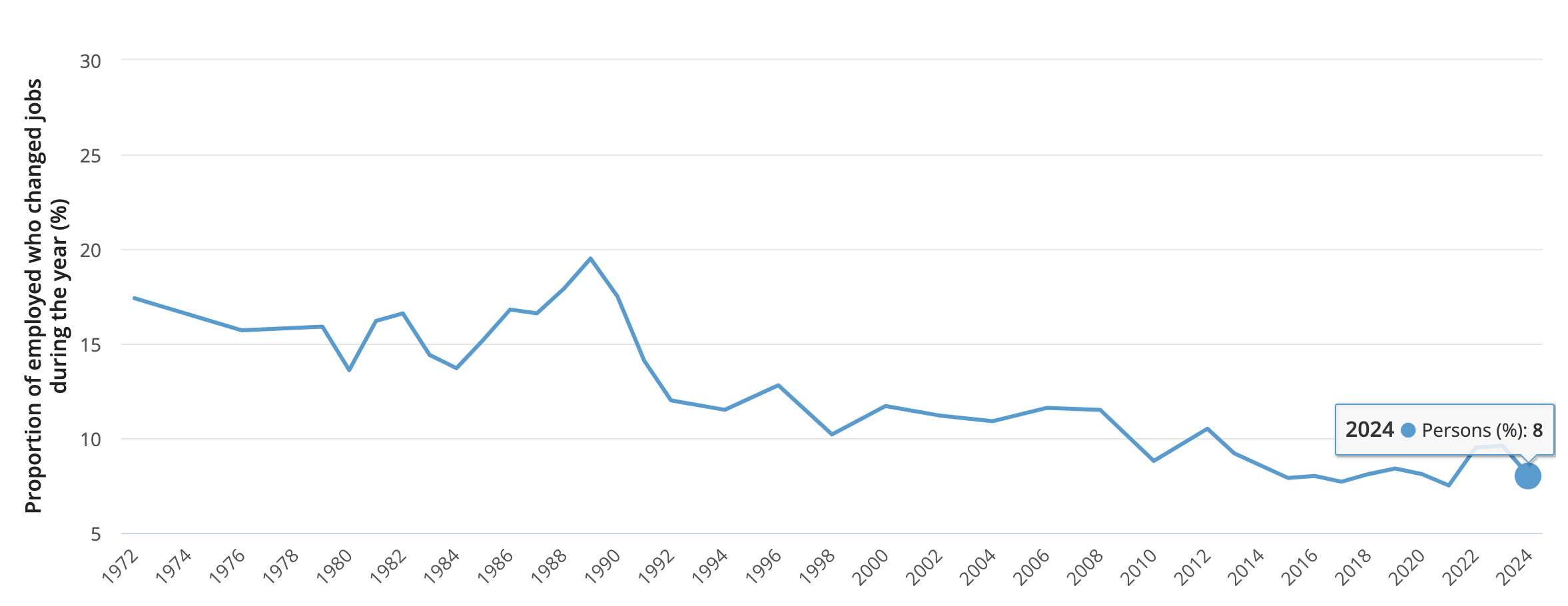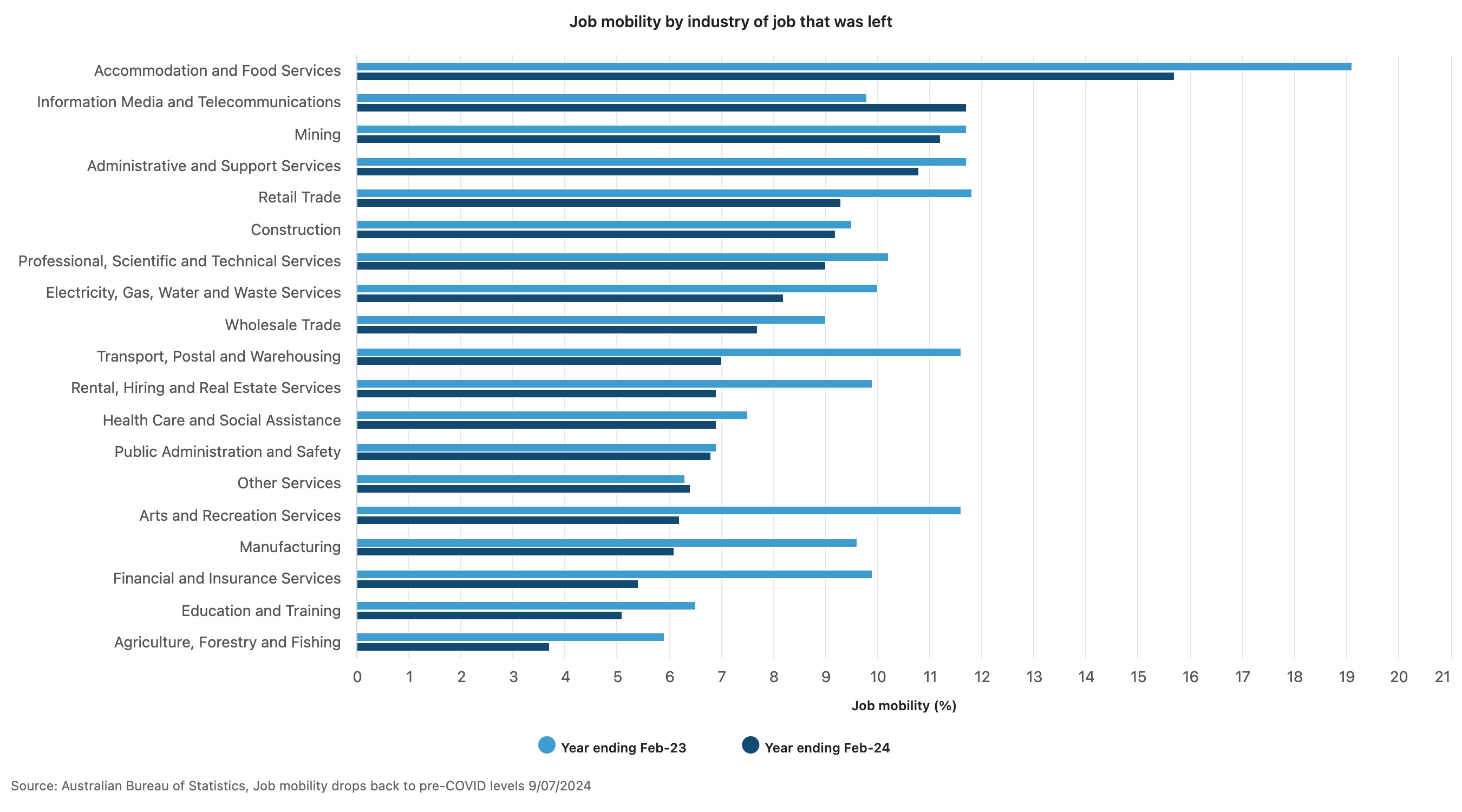
Youth job mobility 'noticeably lower' than highs during pandemic

Around 1.1 million people changed their employers or business in the 12 months to February 2024, driving Australia's job mobility rate down to pre-pandemic levels, according to the Statistics Bureau (ABS).
The ABS said around eight per cent of employed people changed their employer or business in the 12 months to February 2024.
"This was down 1.5 percentage points from 9.6% in February 2023 and back to around what we typically saw during the five years leading up to the COVID-19 pandemic," said Bjorn Jarvis, ABS head of labour statistics, in a statement.
Source: Australian Bureau of Statistics
All age groups have seen drops in mobility over the past year, but they remained slightly higher than pre-pandemic levels in the older age groups, according to Jarvis.
"However, youth job mobility was noticeably lower than the high of 15.9% we saw in 2022 during the pandemic, and well below rates of more than 20% seen 20 years ago," he added.
Almost all industries also saw job mobility rates decline over the past year, except for the Information media and telecommunications (+1.8 percentage points) and Other services (+0.1% percentage points).
The biggest job mobility declines were seen in the Arts and recreation services (-5.4 percentage points), as well as the Transport, postal, and warehousing (-4.5 percentage points).
"Sales Workers still had the highest mobility rate, with 9.7% changing jobs. This was closely followed by Community and Personal Service Workers at 9.6%," Jarvis said.

Source: Australian Bureau of Statistics
Meanwhile, the ABS also revealed that there were 1.9 million potential workers, or those who were not working but wanted to work.
Among them, 555,000 are unemployed, while 1.3 million people are not in the labour force.
"Of the people who wanted to work, just over one million people were available to start work straight away, and an additional 483,000 people were available to start within four weeks but not immediately," Jarvis said.
There were also 810,000 individuals who wanted to work and were available to start within four weeks but were not actively searching for jobs.
Their main reasons include attending an educational institution or health, injury, or disability, according to the report.

Source: Australian Bureau of Statistics